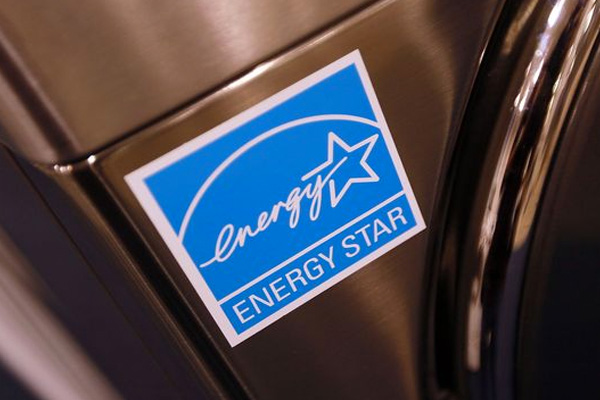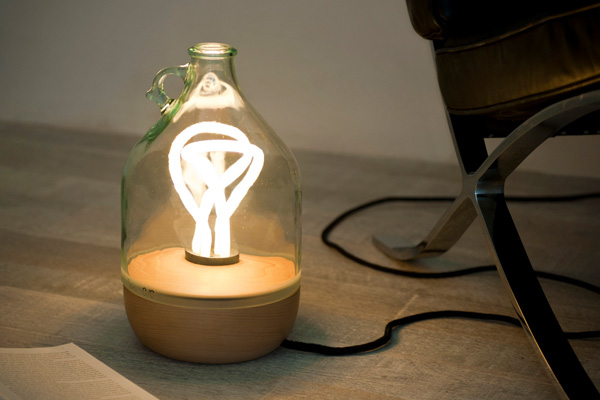Key Takeaways
- Choose Eco-Friendly Materials: Opt for sustainable and renewable materials like bamboo, plantation-grown wood, FSC-certified wood, and reclaimed wood. Avoid purchasing furniture made from over-harvested regions or those that use high-VOC paints and glues, contributing to environmental pollution.
- Avoid High-VOC Paints & Glues: Opt for low-VOC or no-VOC paints and glues to minimize the release of harmful chemicals and odors in your living space. Focus on selecting furniture that uses non-toxic and eco-friendly materials, especially for mattresses and soft furnishings, to promote a healthier indoor environment.
- Opt For Less-Wasteful Appliances: Upgrade your appliances to energy-efficient models certified by Energy Star to conserve resources and reduce energy costs. Consider high-efficiency washing machines, dishwashers, low-flow toilets, and aerated faucets to minimize water consumption, and explore the benefits of a smart home system to intelligently manage energy usage and reduce environmental impact.
Remodeling or furnishing a new home? See how you can make your space more eco-friendly, while saving dollars and the environment.
Eco-friendly is big buzzword these days, but it’s not just about granola and organics. The root of the movement involves making a conscious decision to live in a way and choose products that place less strain on our planet and resources.
Many people believe that what we do impacts not only the current environment and pollution levels, but will also affect future generations as well. By choosing to furnish your home with more eco-friendly versions of things you are already planning on buying, you can reduce your impact and possibly improve the healthiness of your space in the process.
Making Your Home Eco-Friendly
If you are furnishing a new house or renovating soon, choosing eco-friendly products doesn’t have to be difficult or cost much more. Much of it involves knowing which materials are sustainable and earth-friendly, and doing a little research on chemicals and other ingredients.
We’ve put together a few tips from expert sources on furnishing a greener home, including what to look for and what to avoid for a healthier, more eco-friendly space.
Choose Eco-Friendly Materials

Many furniture products are considered bad for the earth because they use endangered or finite materials, or because their harvesting disrupts natural habitats.
To make your home eco-friendly, look for furniture made from sustainable and renewable materials. Here’s a shortlist to start with:
Bamboo – Bamboo grows quickly and is considered more eco-friendly than most woods. It also doesn’t require extensive pesticide use to grow. Bamboo is becoming popular in all types of furniture, and for flooring, fabrics and other household uses as well. See our bamboo vs cotton sheets guide for more information.
Plantation-Grown Wood – Many popular woods like ash, beech and pine are grown widely in plantations. These trees are planted and harvested solely for production, which typically means it’s harvested in a more sustainable manner rather than contributing to deforestation.
FSC-Certified Wood – Woods that are certified by the Forestry Stewardship Council come from forests and producers that practice ethical, sustainable harvesting. They look at things like where wood comes from, treatment of indigenous populations and workers, waste, ecological impact, impacts on wildlife, wood age and other factors for certification.
Reclaimed Wood – Furniture made with wood reclaimed from old furniture, homes or other sources makes use of materials already in existence rather than consuming new wood.
Metal – Furniture made of metal can be eco-friendly, especially when it’s finished with low-VOC paints and varnishes. Metals can often be recycled as well.
Glass – Glass furniture can be a good substitute for wood in many cases, and glass can be recycled later on. Glass tabletops and even tempered glass end tables and other items often look modern and stylish, plus glass is usually affordable as well.
Materials to avoid buying new include virgin plastics (though recycled or recyclable plastic furniture can be environmentally friendly), and woods that come from over-harvested regions or unethical suppliers.
Woods from areas like Malaysia and Burma are also considered suspect according to one Greenpeace campaigner, because some areas are known for illegally over-harvesting or other unethical practices. Investigate where furniture companies source their woods to see whether or not they support eco-friendly producers.
Avoid High-VOC Paints & Glues

Furniture items often feature paint, lacquer finishes or glues that have strong odors. These odors can be a sign of volatile organic compounds (VOCs), chemicals that breakdown and outgas over time, polluting indoor air Verified Source Environmental Protection Agency (EPA) Works to control/prevent natural and manmade disasters. View source and contributing to environmental pollution as well.
VOCs can also be found in high concentrations in traditional wall paints, wallpaper glues, plastics, vinyls, pvc, foams and in carpet and flooring materials. Pressboard woods may also contain formaldehyde, a potent VOC.
Traditional polyurethane foams and flame retardants are another VOC source that may be in soft furnishings and mattresses. Since we spend one-third of the day sleeping in bed, this is one place you likely want to be green and healthy. Look for plant-based, low-VOC foams and non-toxic fire barriers, like those found in Amerisleep’s memory foam mattresses.
Other tips for avoiding VOCs include looking for water-based paints and glues that say no-VOC or low-VOC and seeking furniture producers that use low-VOC materials as well. Greenguard and Oeko-Tex are two organizations that test and certify VOC claims.
Opt For Less-Wasteful Appliances

Your kitchen, bathroom and laundry rooms all present significant opportunities to conserve water and energy resources. If you have older appliances that are still in good condition, don’t fret. But, if your energy bills seem too high, it may be worth taking a look.
Refrigerators consume a lot of energy, especially models made before 2000. Energy Star offers a calculator that can help you determine if the costs of energy savings outweigh replacement.
Water heaters, dishwashers, air conditioners, furnaces, and clothes washers and dryers have also seen big upgrades in energy-efficiency over the past 5-10 years, and could save enough in energy costs to make upgrading worthwhile.
When furnishing a new home or replacing an appliance, opting for more eco-friendly choices can conserve resources while saving you money on bills, and possibly earning you tax credits as well. Here are a few things to look for:
- EnergyStar is a program run by the EPA which tests appliance efficiency, rating and ranking them for easy comparison. You can look for their stickers in stores or compare products on their website to see which are most eco-friendly.
- High-Efficiency washing machines, dishwashers, and dual-flush or low-flow toilets use less water than traditional counterparts.
- Aerated faucets can cut water flow by 50% or more, while still maintaining good water pressure.
Upcycle & Repurpose

Consider repurposing or upcycling furniture before buying new. Pieces you already own can be refurbished to match your new decor, and wood and plastic furniture can often be found in good condition from many second-hand sources.
Items can be painted or refinished to match new decor or even put to different creative uses. Soft furnishings can also be reupholstered at reasonable prices when cushions get worn down or you want to change styles. Even simple old pillows can be repurposed for packaging or pet beds.
Make Your Home Smarter

Modern technology can also help you make your home more eco-friendly. From thermostats that intelligently set temperatures based on when you’re home, to light bulbs that can be shut off from afar, smarter home technologies can save energy and make your home greener.
For those who are not home for large periods of the day, Energy Star estimates that a programmable thermostat set can save around to $180 per year. Other smart home technologies let you switch off power to appliances when they’re not in use and precisely monitor energy usage so you can see how to improve.
More Quick & Earth-Friendly Tips
- If you no longer have any use for old furnishings, try to see if they can be recycled locally or if someone else has a use for them before sending stuff off to a landfill.
- Set up a recycling station in your house. If your trash service doesn’t accept recycling, a local facility might have pickup days, or you could plan a monthly drop-off trip.
- If you have a yard, set up a compost station to reduce trash waste. Compost can feed flower beds or an eco-friendly garden, sprucing up your space and contributing to the top soil.
- Use compact fluorescent lightbulbs (CFLs) or LEDs wherever possible to reduce energy costs and waste.
- We know cool temperatures are important for sleep, but the AC is an energy hog. Have ceiling fans installed where feasible to save on summer cooling. There are many modern, sleek low-energy electric fans available as well.
- Water filtration systems can help you cut back on plastic jugs and bottles by filtering water at the source, either at the house level or on individual faucets.
- Choose cleaning products that are environmentally friendly to keep your home and indoor air clean and healthy. You can even make your own green cleaners from things like vinegar, baking soda, lemon and other household ingredients.
Conclusion
Although it may look like a lot to take in, once you know the basics about furnishing a green household, its actually not very complicated at all.
Simple changes like choosing bamboo and sustainable woods, energy-efficient appliances, no-VOC paint or repurposing old furniture can make a big difference in reducing your home’s carbon footprint, without making a big impact on your wallet.
Taking small steps to make your home more eco-friendly can help you breathe better and sleep more soundly while making a lasting difference to the planet and our environment.
How are you planning on making your next home or remodel more eco-friendly? What do you think is the most important aspect of buying green?
About the author
Rosie Osmun, a Certified Sleep Science Coach, brings a wealth of knowledge and expertise to the health and wellness industry. With a degree in Political Science and Government from Arizona State University College of Liberal Arts and Sciences, Rosie's academic achievements provide a solid foundation for her work in sleep and wellness. With over 13 years of experience in the beauty, health, sleep, and wellness industries, Rosie has developed a comprehensive understanding of the science of sleep and its influence on overall health and wellbeing. Her commitment to enhancing sleep quality is reflected in her practical, evidence-based advice and tips. As a regular contributor to the Amerisleep blog, Rosie specializes in reducing back pain while sleeping, optimizing dinners for better sleep, and improving productivity in the mornings. Her articles showcase her fascination with the science of sleep and her dedication to researching and writing about beds. Rosie's contributions to a variety of publications, including Forbes, Bustle, and Healthline, as well as her regular contributions to the Amerisleep blog, underscore her authority in her field. These platforms, recognizing her expertise, rely on her to provide accurate and pertinent information to their readers. Additionally, Rosie's work has been featured in reputable publications like Byrdie, Lifehacker, Men's Journal, EatingWell, and Medical Daily, further solidifying her expertise in the field.
View all posts





